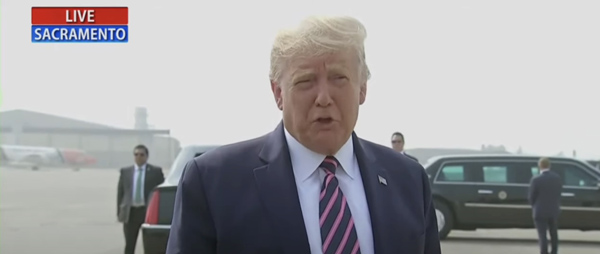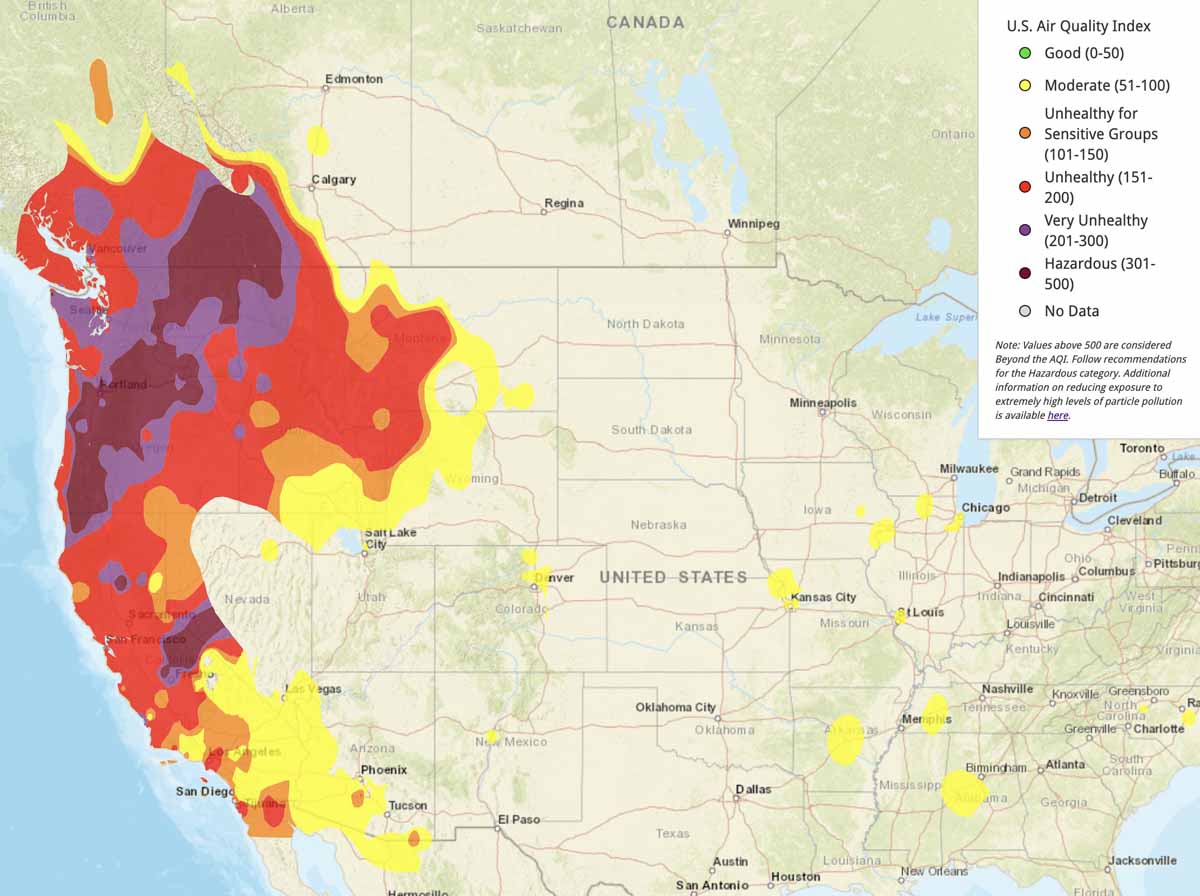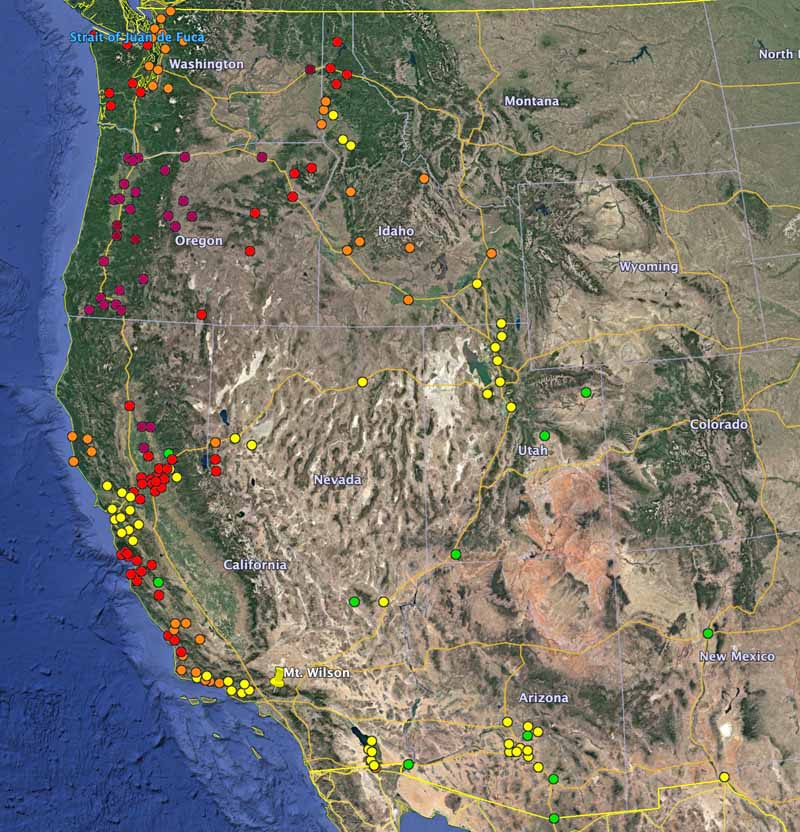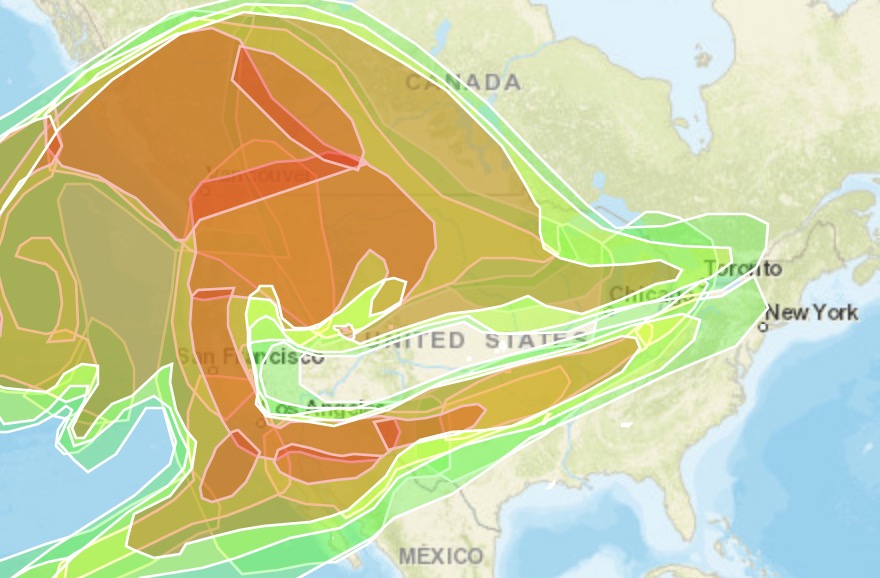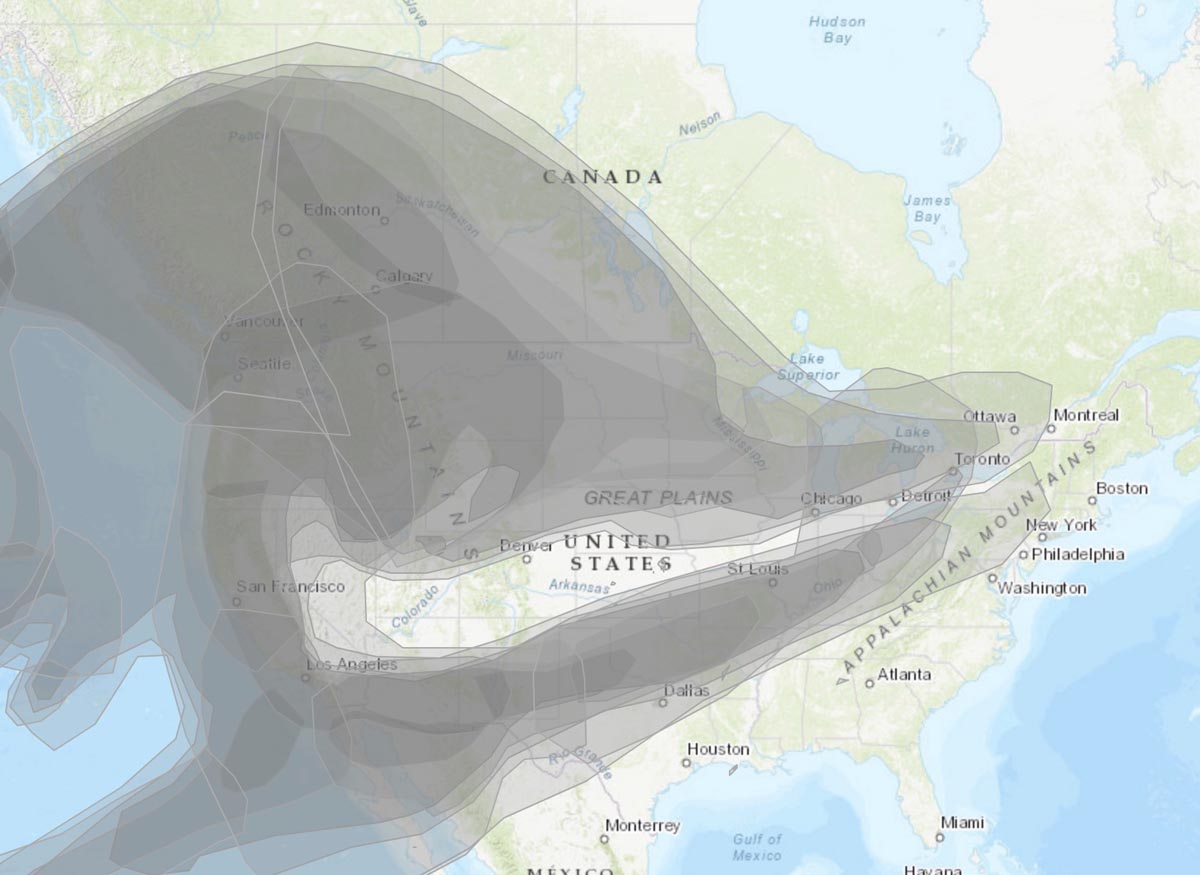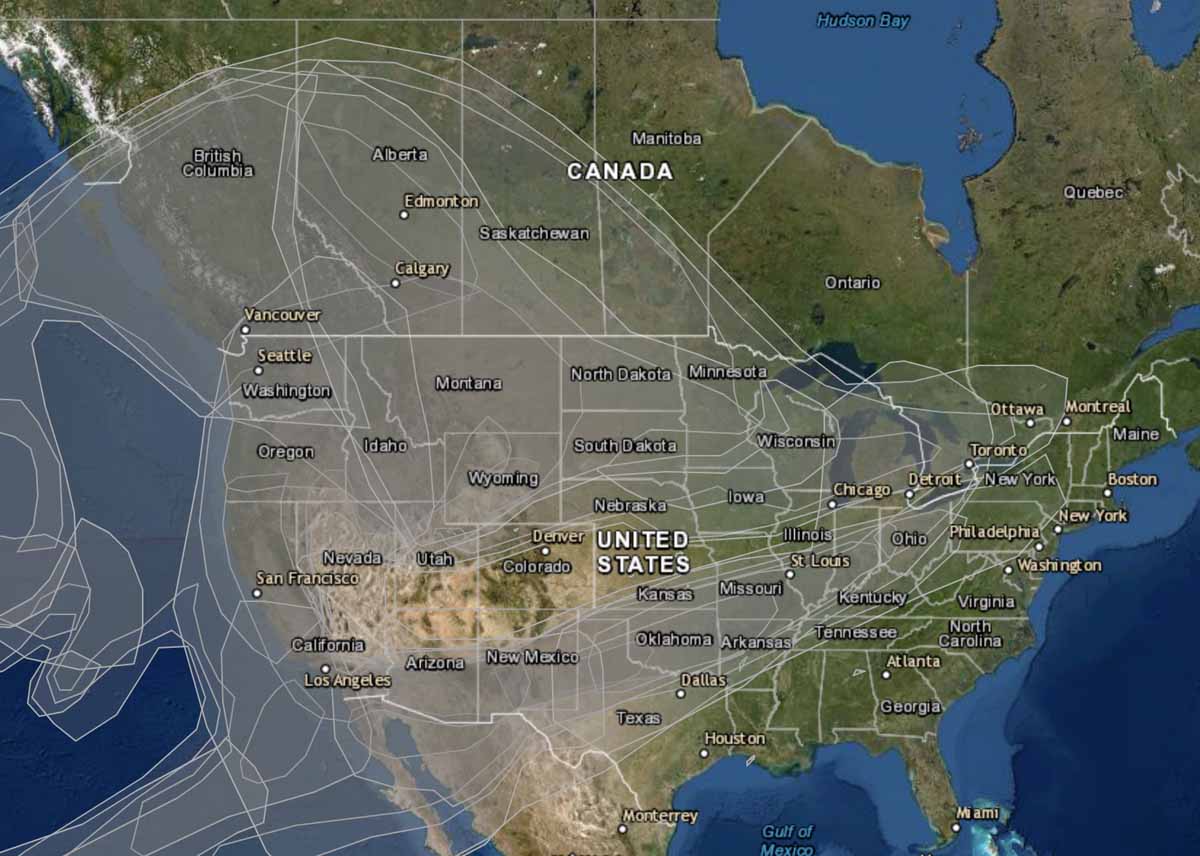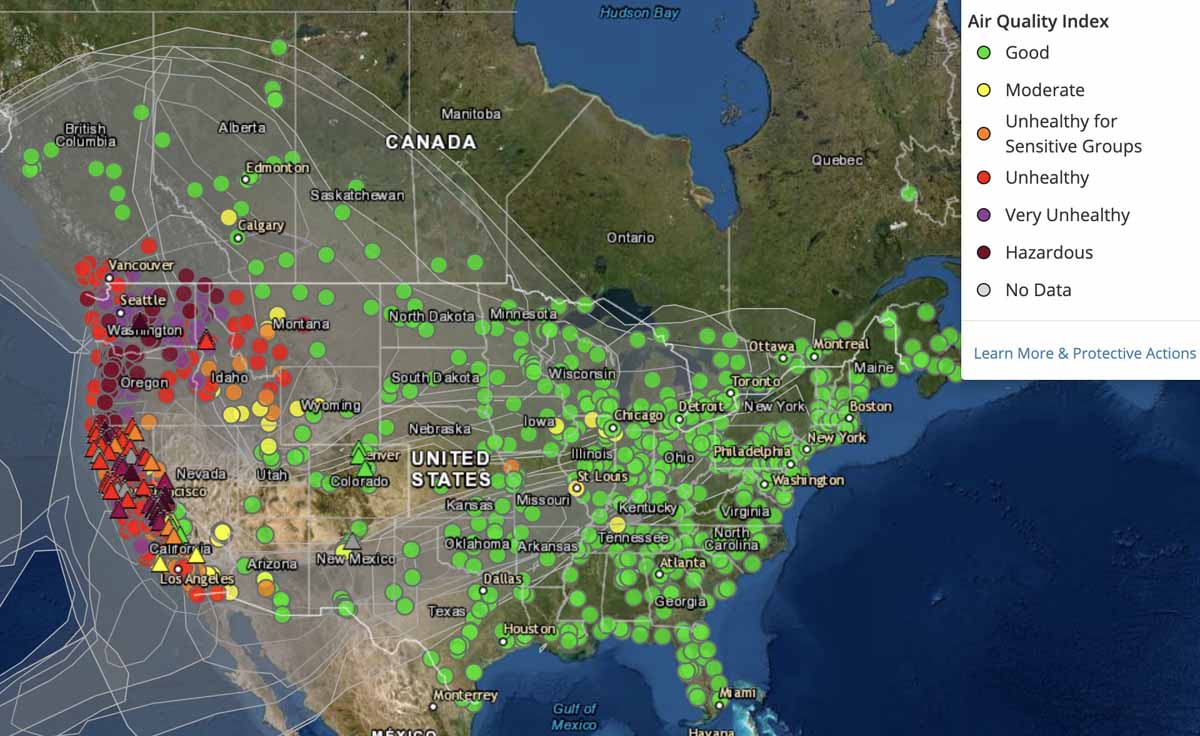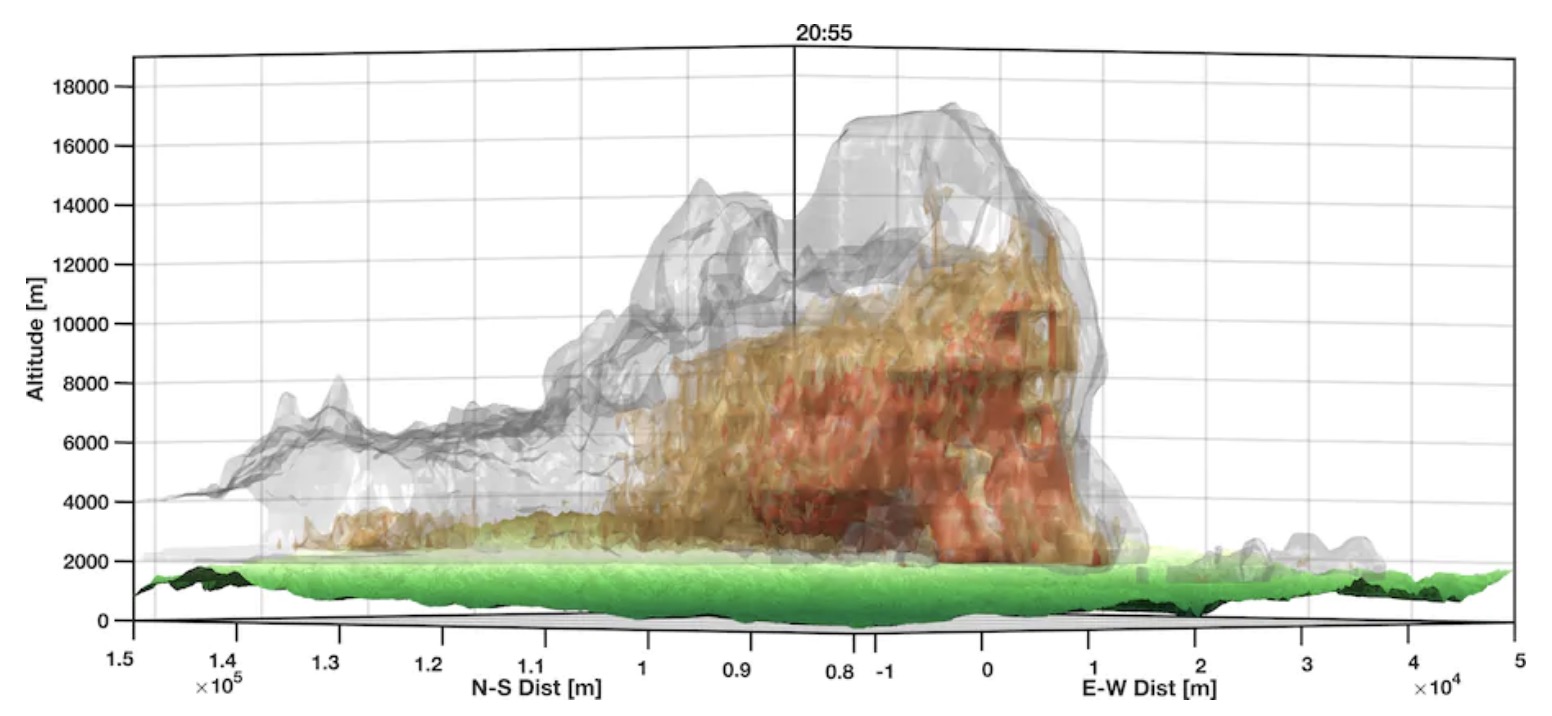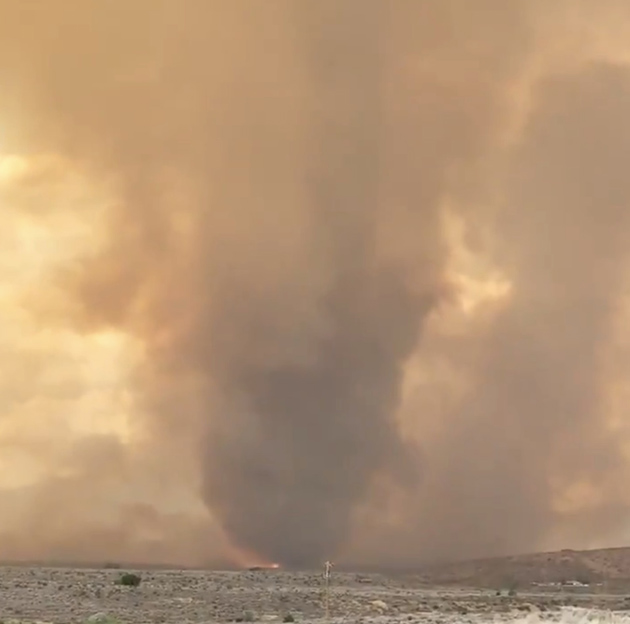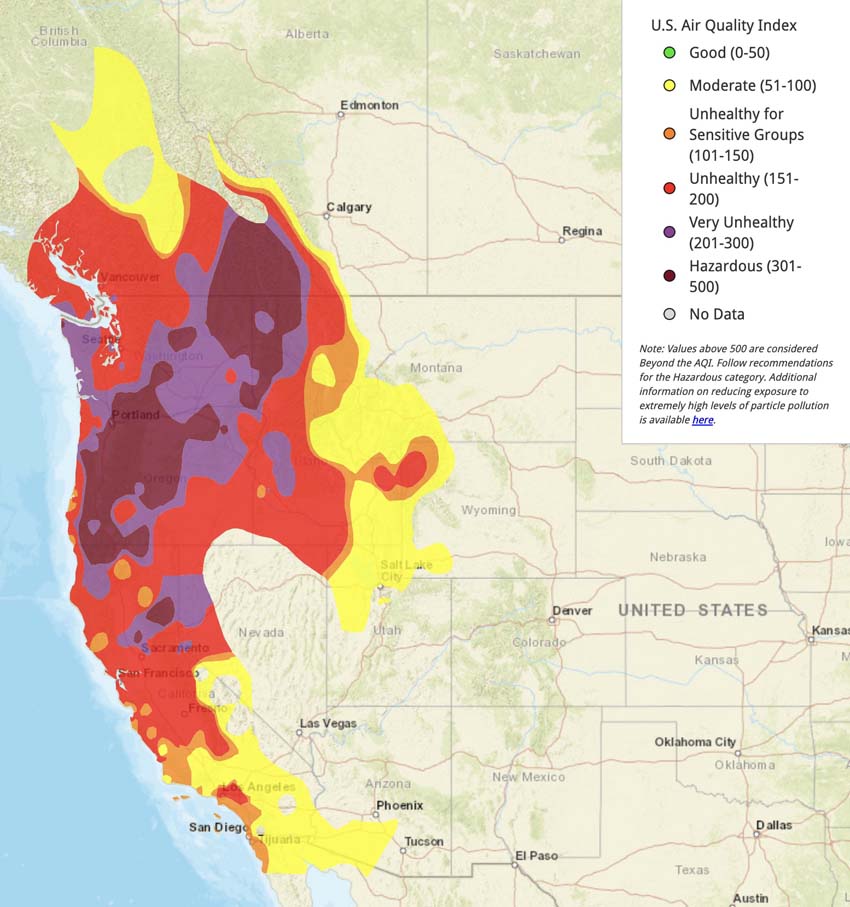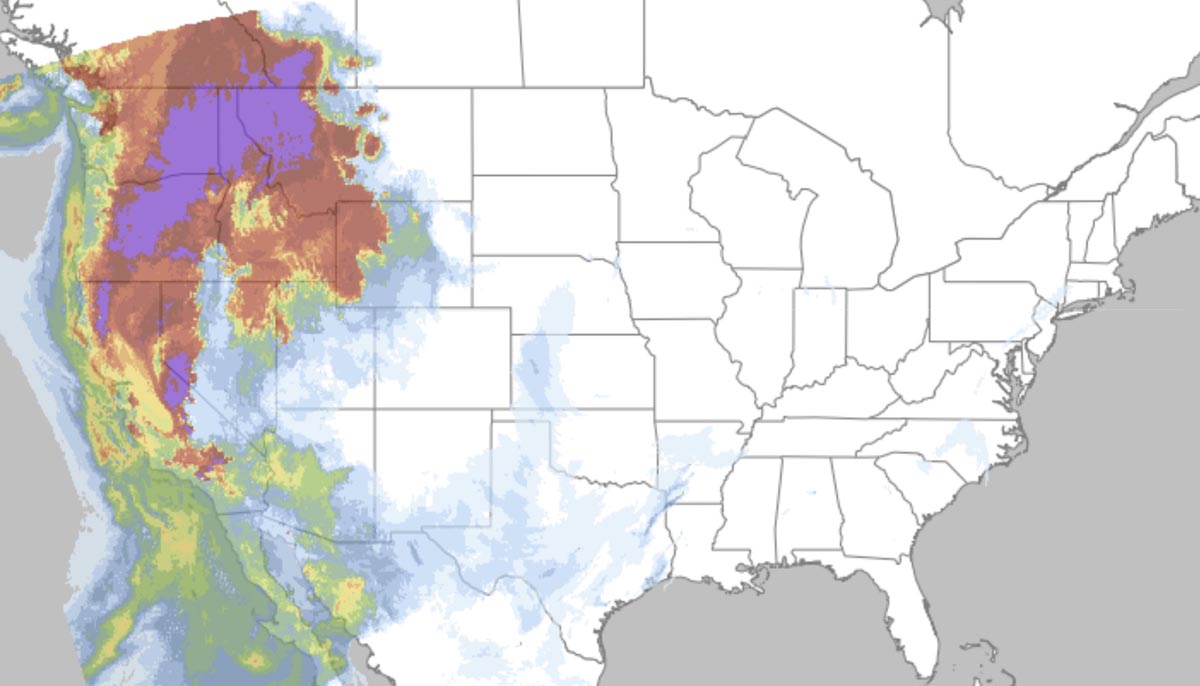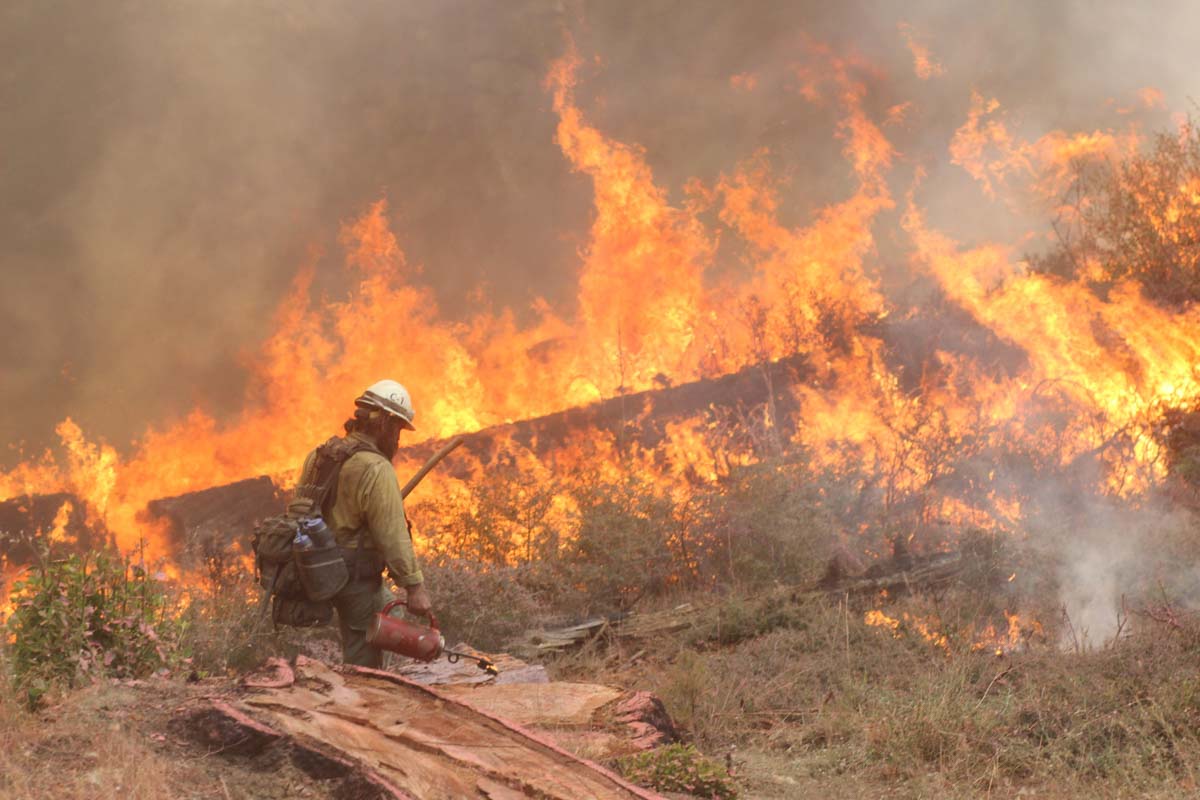
September 15, 2020 | 7:45 a.m. PDT
Yesterday President Trump flew in to Sacramento McClellan Airport to receive a briefing on the wildfires ravaging the state. Before he met with the Governor and fire officials he stepped before microphones and provided his opinion about what led to the numerous fires in Oregon and California.
“There has to be good, strong, forest management,” he said, “which I’ve been talking about for three years with the state so hopefully they’ll start doing that.”
(The federal government owns nearly 58 percent of California’s 33 million acres of forestlands, while the state owns 3 percent.)
Then the President talked about exploding trees:
“But with regard to the forest, when trees fall down after a short period of time, about 18 months, they become very dry, they become really like a match stick and they get up you know there’s no more water pouring through and they become very, very they just explode. They can explode.”
The myth of exploding trees may have originated with a classic film about wildfires, “Red Skies of Montana” which showed firefighters being harassed by exploding trees, thanks to movie magic. Then the book “Young Men and Fire” mentioned “the occasional explosion of a dead tree”.
In my 33 years of fighting wildland fires I never saw or heard a tree explode, and I don’t know a reputable firefighter that has.
In 2016 after the late Senator John McCain talked about the Chedeski and Wallow fires in Arizona and “trees literally exploding as the fuels that have accumulated around the bases of the trees burns up,” I reached out to the firefighter community asking if anyone had ever seen a tree explode. No one said they had.
When lightning strikes a tree it can explode when the moisture inside is converted to steam in a millisecond. And maple trees can explode in below freezing temperatures when the sap freezes. There are unconfirmed reports that eucalyptus trees in Australia can explode in a fire but I’m not convinced this is true. I understand that heated gasses or sap can shoot out of a crack in a eucalyptus tree and can be ignited during a fire.
Frank Carroll, in a comment on yesterday’s article about the President’s remarks, said he possessed a video shot with a wildlife camera of a tree exploding in a fire. He also said, “Rothermel theorized that the moisture in the tree is superheated and caused the rapid expansion of gasses that go boom.”
(UPDATE: Mr. Carroll sent me the video, with permission to post it on YouTube. You can judge for yourself if it shows an explosion.)

Since his name had been invoked, I reached out to Richard Rothermel, who is a retired fire scientist. In 1972 he and others developed the Forest Service’s first quantitative, systematic tool for predicting the spread and intensity of forest fires, which introduced a new era in fire management. And surprisingly, it is still the main tool being used today. Many researchers have produced alternative models, but none have made it into the hands of firefighters on a widespread basis.
When Mr. Rothermel began researching the behavior of wildland fires, he had just been downsized from a shuttered Department of Defense program that had been working to develop a nuclear-powered airplane.
I told Mr. Rothermel what was said about him, and asked for his response. He replied within a few hours:
“I have been out of the fire business for a long time and I don’t recall discussing exploding trees. Thats not to say I didn’t, but theorizing the problem now, here is what I think. There may be different concepts of what it means for a tree to explode. One could be that the foliage suddenly bursts into flames due to a massive amount of heat engulfing the tree. That I believe could happen.
“The other which your question prompts me to believe is what is meant by an exploding tree is for the trunk to become super heated sufficiently to cause the moisture in the tree to suddenly become steam with resulting expansion which would shatter the tree. In my years at the fire laboratory I never heard anyone report seeing this or finding evidence of it.
“The problem is the timing, a tree at the fire front could be engulfed in both convective and radiant heat which would transfer heat to the tree’s surface very fast, but the heat would then have to be transported by conduction to the moisture in the cambium layer. Conduction is a very slow method of heat transfer in woody material. In the situation under discussion the fire would be spreading extremely fast and the fire front would have moved on before the heat could have time to boil the water in the cambium layer and cause a steam explosion at the fire front. What could happen after the front has passed and the fire continues to burn if fuels are available is anybody guess.”
UPDATE, September 18, 2020 | 1:32 p.m. PDT:
I first wrote about the myth of trees exploding in 2016 when a senator talked about “trees literally exploding”. I noted then that at least one book and a movie also propagated the myth, and I wanted to dispel it.
When Mr. Trump said trees can explode, I decided to write a followup to the 2016 article, hoping to clear up any confusion, since trees do not explode.
Some of the readers of Wildfire Today were offended by what they saw as criticism, and bent over backwards to make what he said seem reasonable. A person might wonder if they would have put up as strong a defense if the same words had been spoken by a different President.
Bill Gabbert
Wildfire Today
Wildfire News & Opinion, since 2008

